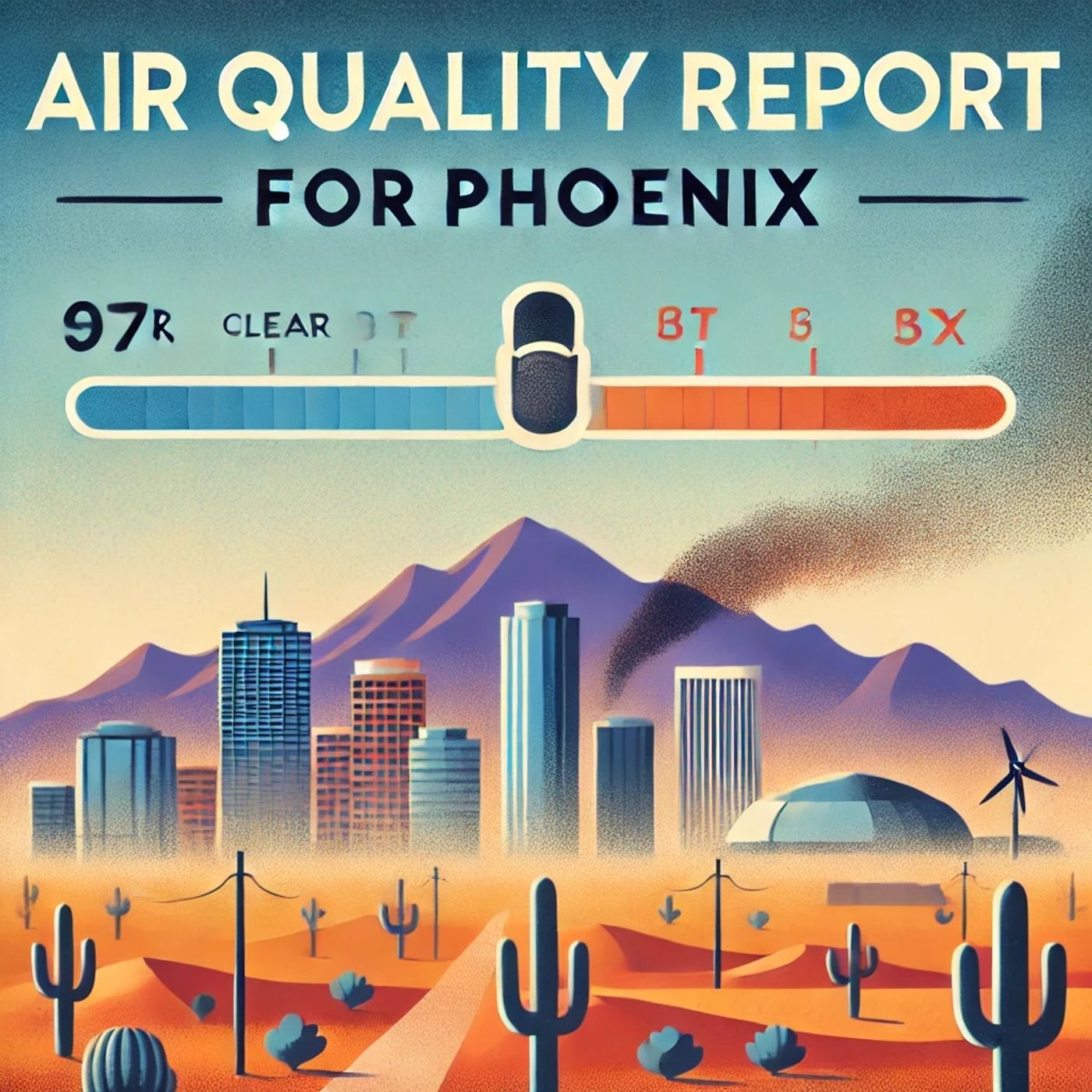Listen "Phoenix's Air Quality Impacted by Variety of Environmental Factors"
Episode Synopsis
As of today, the air quality in Phoenix, Arizona, is experiencing a range of conditions influenced by various environmental factors typical of urban areas and desert climates. Phoenix, with its rapid urban expansion and unique geographical features, frequently faces challenges regarding air quality management.The primary pollutants of concern in Phoenix typically include particulate matter, ozone, and nitrogen dioxide. Particulate matter, particularly PM10 and PM2.5, represents tiny particles suspended in the air, which can originate from construction sites, unpaved roads, and natural dust storms common in desert environments. Ozone, a secondary pollutant, forms when sunlight interacts with emissions from vehicles and industrial activities. This is especially problematic during the hotter months when solar radiation is intense.Today, data from air quality monitoring stations across Phoenix show varying levels of these pollutants. The Air Quality Index, or AQI, is used to quantify this, with values below 50 indicating good conditions and values above 100 reflecting levels that may be harmful to sensitive groups, such as children, the elderly, and those with pre-existing health conditions.In the early morning hours, Phoenix usually experiences relatively lower concentrations of ozone due to cooler temperatures and reduced sunlight. However, as temperatures rise throughout the day, ozone levels typically increase. Wind patterns can also influence air quality, as windy conditions might elevate particulate matter levels by stirring up dust, while breezes could disperse pollutants, leading to temporary improvements in local air quality.Furthermore, Phoenix's unique topography, situated in a valley, can sometimes trap pollutants, preventing them from dispersing. This phenomenon, known as a temperature inversion, occurs when a layer of warm air overlays cooler air at the surface, acting like a lid and inhibiting air movement.City officials and environmental agencies in Phoenix continuously monitor air quality. They provide advisories, especially on days when the AQI suggests unhealthy conditions. Residents, particularly those in sensitive groups, are advised to limit outdoor activities and take precautions to protect their health during such periods.Efforts to improve air quality in Phoenix include promoting public transportation, encouraging carpooling, and implementing stricter regulations on industrial emissions. Community initiatives also focus on reducing dust and particulates through various dust-control measures.In summary, today's air quality in Phoenix reflects typical patterns seen in southwestern urban centers, with factors such as temperature, wind, and urban activity playing significant roles. While it presents challenges, ongoing monitoring and community efforts continue to strive for cleaner, healthier air for all residents.This content was created in partnership and with the help of Artificial Intelligence AI
More episodes of the podcast Phoenix Air Quality Report - Daily
Phoenix Enjoys Excellent Air Quality Today
23/08/2025
 ZARZA We are Zarza, the prestigious firm behind major projects in information technology.
ZARZA We are Zarza, the prestigious firm behind major projects in information technology.
